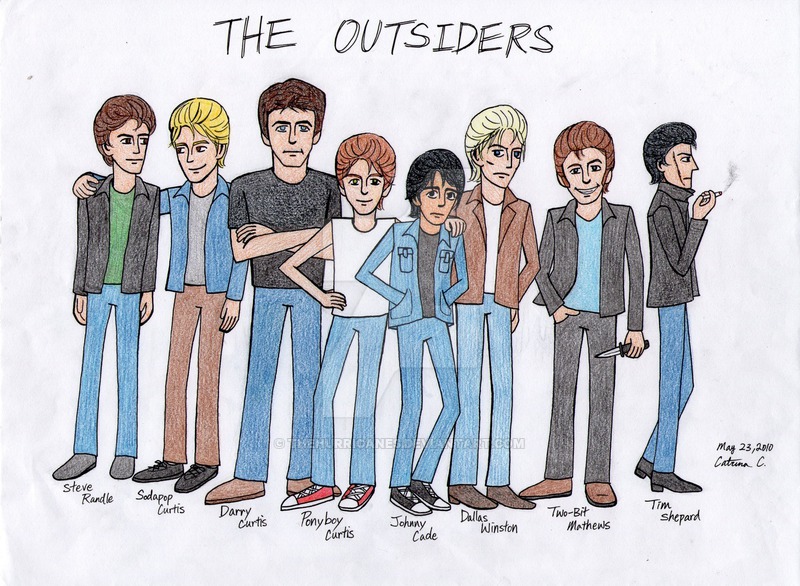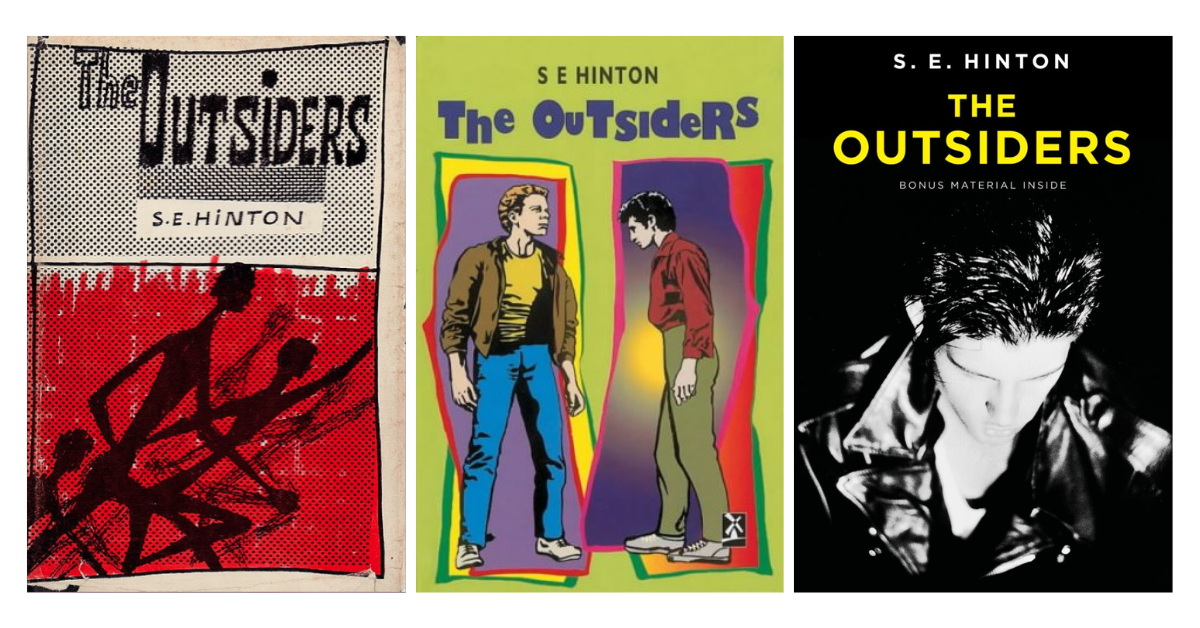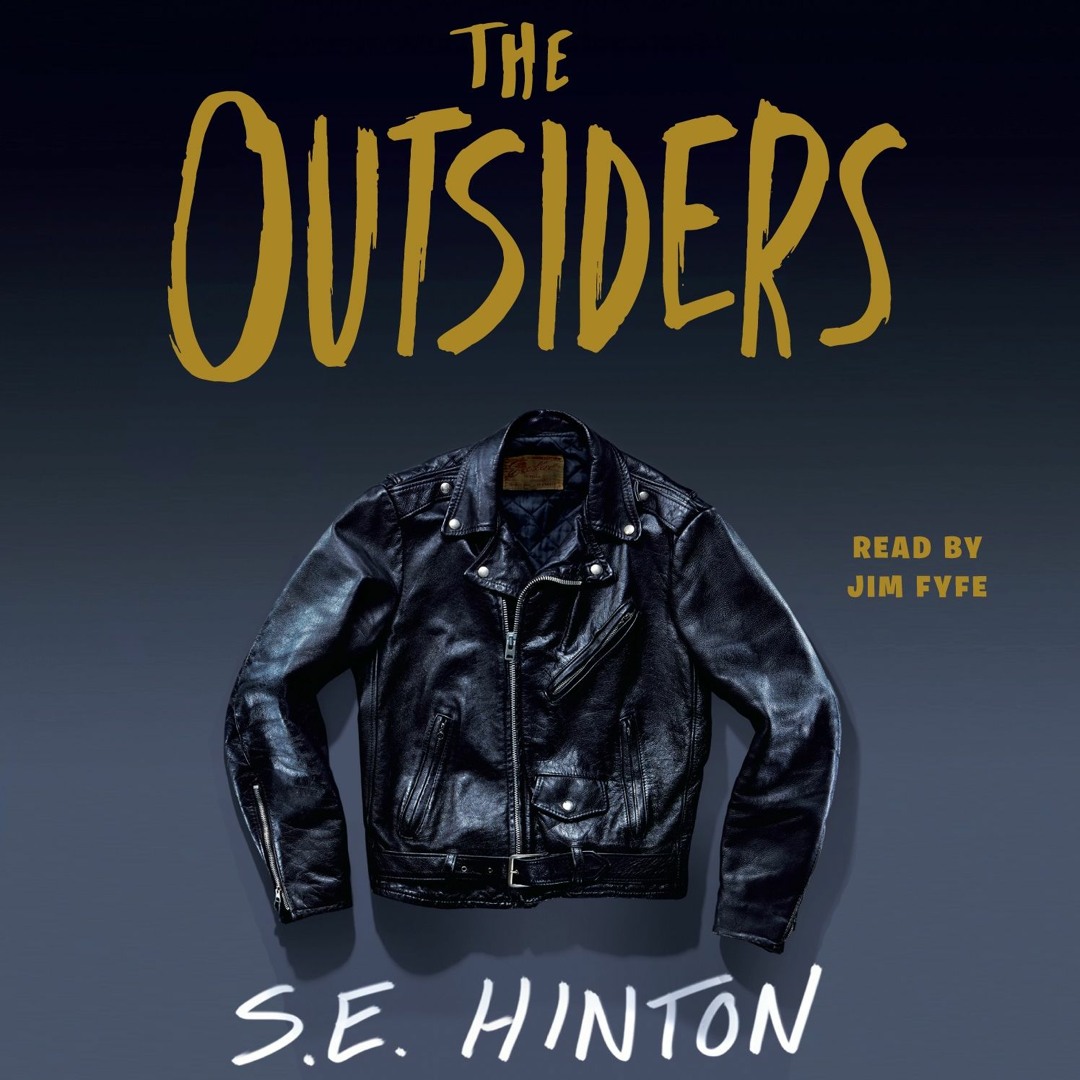The Outsiders: A Deep Dive into S.E. Hinton's Classic Novel

S.E. Hinton’s The Outsiders, first published in 1967, transcends its young adult fiction classification. Its enduring popularity stems from its raw portrayal of teenage life, social conflict, and the search for belonging, resonating with readers across generations. This exploration of The Outsiders will delve into various aspects of the novel, examining its literary merit, cultural impact, and lasting legacy, utilizing a framework inspired by common website topics related to books and literature:
The Outsiders: Genre and Literary Classification
The Outsiders is primarily categorized as young adult fiction, a genre it significantly influenced. Before its publication, YA literature often focused on idealized portrayals of high school life. Hinton’s unflinching depiction of gang violence, social inequality, and the complexities of adolescence revolutionized the genre, paving the way for more realistic and nuanced storytelling in YA literature.
While firmly rooted in YA fiction, The Outsiders also possesses elements of other genres. Its exploration of themes like loyalty, betrayal, and redemption touch upon aspects of classic literature, particularly coming-of-age narratives. The novel’s exploration of social class conflict introduces elements of social realism, while its tense plot and dramatic events lend themselves to elements of thriller fiction. This genre blending contributes to the novel’s broad appeal, making it accessible and engaging to a wide readership.
The book’s narrative structure is straightforward, employing a first-person perspective from the protagonist, Ponyboy Curtis. This intimate point of view allows readers direct access to Ponyboy’s thoughts, feelings, and experiences, fostering a strong emotional connection. The simple, yet powerful language enhances the story’s accessibility, drawing readers into the fast-paced narrative.

Hinton’s writing style is characterized by its authenticity and relatability. She avoids overly stylized prose, opting instead for a conversational, almost diary-like tone that accurately captures the vernacular and thought processes of teenagers. This stylistic choice is crucial to the book’s success, as it creates a sense of immediacy and believability that draws readers into Ponyboy’s world.

The novel’s setting, Tulsa, Oklahoma, during the 1960s, further enhances its realism. Hinton’s detailed depiction of the social landscape and the distinct cultures of the greasers and socs adds depth and authenticity to the story. This specificity of setting grounds the narrative, lending it an air of credibility and making the conflicts feel palpable. The realistic depiction, particularly of poverty, contrasts sharply with often romanticized views of adolescence.
Authorial Background and Inspirations
S.E. Hinton’s personal experiences significantly shaped The Outsiders. Written when she was only sixteen, the novel draws upon her own observations of the social divisions and gang conflicts prevalent in her hometown of Tulsa. The author’s choice to use her initials instead of her full name, Susan Eloise Hinton, was a deliberate strategy to avoid gender bias in the male-dominated literary landscape of the time. This proactive approach reflects her dedication to conveying her story’s message regardless of societal expectations.

Hinton’s inspirations extend beyond her personal experiences. Her use of cinematic techniques in her writing suggests an affinity for film. The novel’s vivid descriptions and dynamic scenes translate well to the screen, contributing to the success of its subsequent film adaptations. The inclusion of the Robert Frost poem, “Nothing Gold Can Stay,” and the reference to Gone with the Wind also highlight Hinton’s knowledge and appreciation of literature, enriching the novel’s thematic depth.
Reading Habits, Summaries, and Educational Value
The Outsiders is known for its accessibility, making it a popular choice for young readers and a staple in many middle and high school curricula. Its relatively short length and fast-paced narrative can easily capture the attention of even reluctant readers. The novel’s themes of social class, prejudice, and personal identity are highly relevant to young people’s lives and experiences, making it a compelling and thought-provoking read.
The novel’s educational value extends beyond its ease of reading. It provides opportunities for discussions on:
Social Inequality: The Outsiders vividly depicts the stark contrast between the wealthy Socs and the impoverished greasers, prompting conversations about socioeconomic disparities and their impact on individual lives and opportunities.
Prejudice and Stereotyping: The novel challenges readers to question stereotypes and prejudices about social groups. The greasers, initially presented as troublemakers, are revealed to have complex personalities and motivations, challenging preconceived notions.
Loyalty and Friendship: The strong bonds of friendship and loyalty among the greasers are a central theme, offering valuable insights into the importance of supportive relationships in navigating difficult times.
Violence and its Consequences: The novel explores the consequences of violence, both physical and emotional, prompting critical analysis of its impact on individuals and communities.
Identity and Belonging: The central struggle of the novel is the characters’ longing for a sense of belonging and acceptance. The exploration of this theme provides a relatable lens into the search for identity amongst teenagers.
Furthermore, the use of colloquial language and slang adds to its relatability and can spur language analysis and the exploration of cultural nuances.
Cultural Impact, Adaptations, and Awards
The Outsiders has achieved phenomenal cultural significance. Its impact on young adult literature is undeniable, making it a cornerstone of the genre. The book has sold millions of copies worldwide and has been translated into numerous languages. Its enduring relevance is demonstrated by its continued presence in school curriculums and its enduring popular culture presence.
The novel’s impact extends to various adaptations:
Film (1983): Francis Ford Coppola’s film adaptation launched many young actors to stardom, further solidifying the novel’s place in popular culture. The film helped to popularize the novel and its themes to a broader audience.
Television Series (1990): A short-lived television series continued the story, further engaging fans.
Stage Adaptation (1990): A stage play adaptation provides a different perspective on the narrative.
Stage Musical (2023, 2024): A critically acclaimed Broadway musical adaptation debuted, showcasing the narrative’s ability to adapt to different mediums. The musical’s success demonstrates the continuing resonance of the novel’s themes.
Film Adaptation of the Musical (2025): A future feature film based on the musical signals the ongoing interest in The Outsiders.
The novel’s numerous awards include:
New York Herald Tribune Best Teenage Book
Chicago Tribune Book World Spring Book Festival Honor Book
ALA Best Book for Young Adults
Massachusetts Children’s Book Award
Margaret A. Edwards Award (awarded to S.E. Hinton for her body of work, including The Outsiders)
These accolades highlight the significant literary merit and societal influence of The Outsiders.
Libraries and Archives
The enduring legacy of The Outsiders is reflected in its presence in numerous libraries and archives around the world. Public libraries hold countless copies of the novel, making it easily accessible to readers of all ages. Digital libraries provide online access, expanding its reach further. Rare book collections may house early editions and other archival materials related to the novel’s publication history and its various adaptations. The Outsiders House Museum in Tulsa, Oklahoma further establishes its lasting imprint.
The creation of the Outsiders House Museum in Tulsa, the novel’s setting, showcases the book’s powerful connection to its place of origin. The museum itself becomes a testament to the book’s cultural significance.
Conclusion:
S.E. Hinton’s The Outsiders remains a powerful and relevant work of young adult fiction. Its exploration of timeless themes, combined with its realistic portrayal of teenage life and social dynamics, has secured its place as a classic of the genre and a significant piece of American literature. Its continued adaptation to various media and its ongoing popularity demonstrate its lasting cultural impact and enduring appeal. The novel’s accessibility and thematic depth make it a valuable addition to any reader’s library and a valuable resource for educators and students alike.